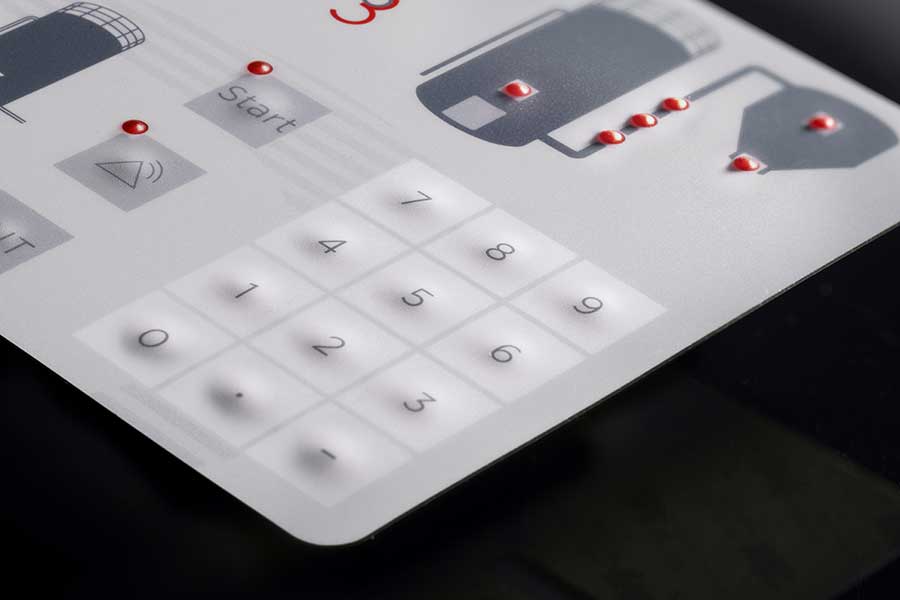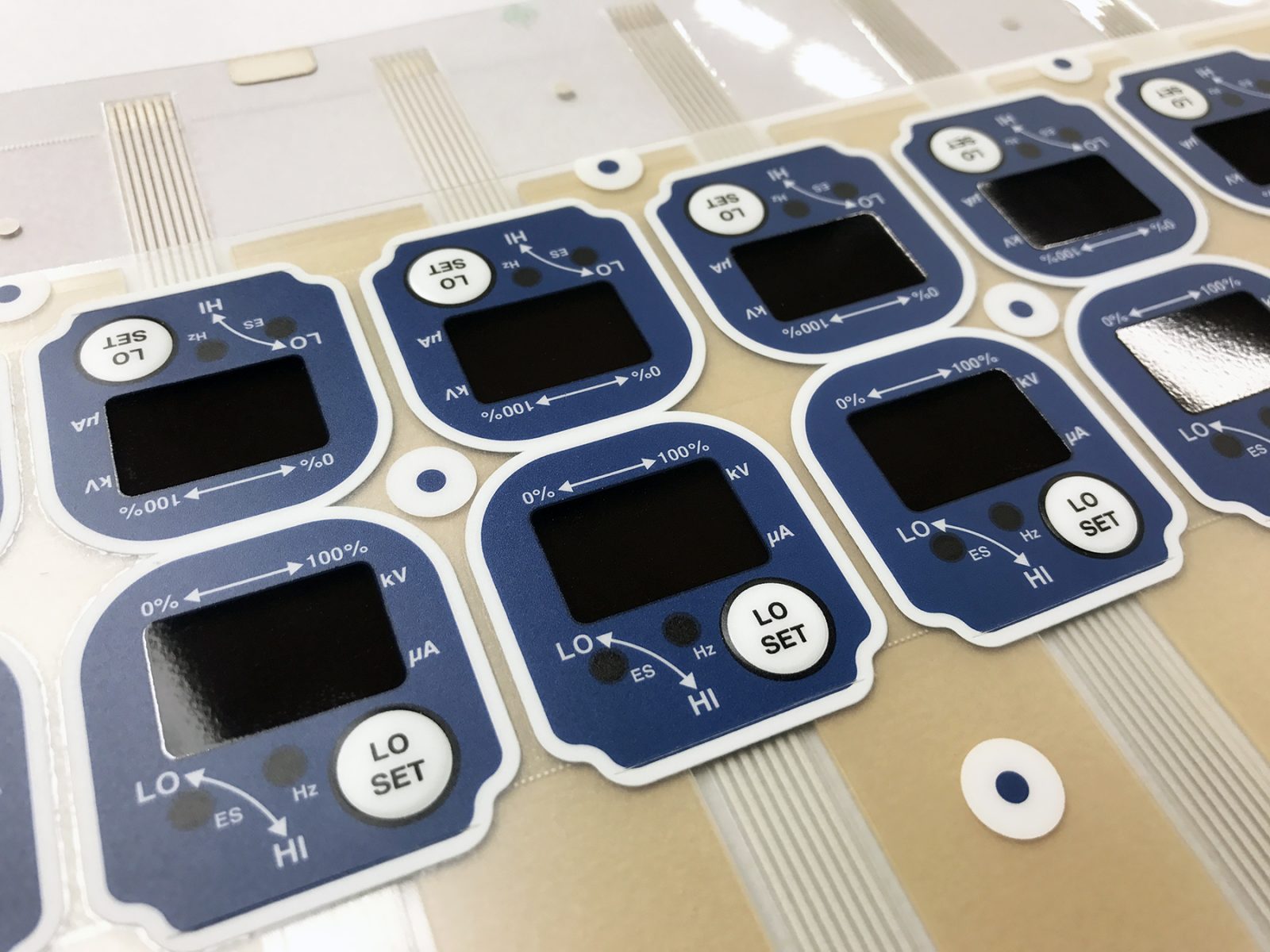Choosing a domestic membrane switch manufacturer can reduce lead times and transportation costs.
All About Membrane Change: Recognizing Its Design and Performance
When you consider the control interfaces in contemporary tools, membrane layer buttons commonly enter your mind. These elements are greater than just buttons; they blend style and functionality perfectly. Comprehending exactly how they function and what makes them reliable can transform your viewpoint on everyday electronics. There are subtleties to their style and efficiency that you may not be conscious of. Allow's discover what sets membrane switches over apart from various other control systems.
What Are Membrane Buttons?

Their smooth nature makes them very easy to tidy and resistant to dust and moisture, an important attribute in several settings. Membrane layer switches can also be tailored pertaining to shape, dimension, and graphics, allowing producers to create special user interfaces customized to specific items. And also, they're lightweight and thin, which helps in minimizing the overall mass of devices. In general, membrane buttons play a considerable duty in boosting customer experience across a broad selection of applications.
How Membrane Switches Over Work
When you push a secret on a membrane layer switch, it triggers a straightforward yet efficient mechanism. membrane switch manufacturer. The leading layer, typically made of flexible material, pushes down onto a conductive layer underneath it.
You'll see that the responsive responses varies based on the button style, providing either a soft click or a more noticable action. Once you release the key, the membrane returns to its original position, reopening the circuit and quiting the signal. This process occurs nearly immediately, ensuring a responsive customer experience.
Membrane buttons are prominent as a result of their resilience and resistance to dirt and wetness, making them optimal for different applications, from household appliances to medical devices. Comprehending this procedure assists you appreciate their widespread use.
Key Components of Membrane Layer Buttons
Understanding the essential components of membrane layer switches is essential for grasping their capability and style. At the core, you'll discover the graphic overlay, which provides the visual interface for users. Beneath that, there's a spacer layer that divides the circuit layers, guaranteeing that they do not make contact till pushed. The circuit layer is where the magic takes place; it consists of conductive traces that finish the circuit when you push the switch. Another crucial aspect is the sticky backing, allowing the switch to abide by surface areas safely. Ultimately, the protective layer shields versus environmental variables and use, expanding the button's life expectancy. Each element plays a considerable role in making sure reputable performance and user communication. By understanding these parts, you'll gain understanding into how membrane layer switches operate and their significance in various applications.
Materials Utilized in Membrane Switch Over Layout
The efficiency and durability of membrane switches over heavily depend upon the products made use of in their layout. You normally encounter polyester and polycarbonate as main substratums due to their outstanding stamina and adaptability. These products resist scratches and chemicals, making them excellent for demanding environments.
The conductive layers typically utilize silver or carbon, chosen for their reliability and conductivity. membrane switch manufacturer. Silver provides premium efficiency, while carbon is an affordable option. For the overlay, you may think about a matte or shiny surface, relying on your visual requirements and individual experience
Adhesives play an important function too; they bond layers firmly and guarantee longevity. Ensure to choose adhesives that withstand environmental variables like temperature level and moisture. Do not neglect the importance of an excellent printing technique for graphics, as it enhances both functionality and visual charm. Selecting the right materials will guarantee your membrane switch stands the test of time.
Design Factors To Consider for Membrane Switches
While designing membrane buttons, it's essential to take right into account different aspects that influence their functionality and customer experience. Begin by concentrating on the format and switch size; make sure they're instinctive and very easy to browse. Think about the tactile comments you wish to offer-- will users require a recognizable click or a softer touch? Furthermore, think of the materials you'll make use of, as they'll influence toughness and aesthetic appeals.
Don't neglect the graphic style; clear labeling and shade contrast are substantial for exposure. Validate your layout accommodates ecological elements, like dampness or temperature variations, which might influence performance. Ultimately, remember the value of screening models with genuine customers to collect comments and make essential adjustments. This repetitive procedure aids you refine the design, verifying it satisfies both practical and visual demands successfully. By meticulously taking into consideration these elements, you'll create a membrane layer switch that improves functionality and fulfillment.
Applications of Membrane Layer Switches
Membrane switches are flexible elements discovered in numerous applications, from industrial equipment to customer electronic devices. You'll see their effect in equipments that call for durable interfaces and in gadgets that take advantage of sleek designs. Understanding these applications helps you value the performance and functionality of membrane switches in everyday technology.
Industrial Equipment Usage
When you're looking to improve the performance of industrial tools, membrane layer switches provide a reliable remedy that combines longevity with easy to use style. These switches are best for harsh atmospheres, providing resistance to dirt, dampness, and chemicals. Welcome membrane layer switches to simplify your operations and improve general performance.
Consumer Electronics Assimilation
In the domain name of customer electronic devices, membrane layer switches play an important function in enhancing customer communication and tool functionality. Membrane switches likewise assure toughness and resistance to dirt and wetness, prolonging the lifespan of your electronic devices. By choosing membrane buttons, you boost not simply the performance but additionally the design of your tools, making everyday i loved this communications smooth and enjoyable.
Advantages and Downsides of Membrane Switches
While membrane layer buttons use a range of benefits, they likewise come with some drawbacks that you ought to take into consideration. One considerable advantage is their portable design, making them suitable for space-constrained applications.

Nonetheless, there are disadvantages. Membrane switches can have a shorter lifespan compared to mechanical buttons, specifically under hefty usage. They can likewise be less tactile, which may influence user responses during operation. In addition, if damaged, fixing them can go be challenging and commonly calls for total replacement. Inevitably, their sensitivity to extreme temperatures and ecological problems might limit their effectiveness in certain settings. Balancing these advantages and disadvantages will certainly help you establish if membrane switches are the best fit for your task.
Often Asked Inquiries
For How Long Do Membrane Layer Changes Typically Last?
Membrane layer changes typically last in between 5 to 10 years, relying on usage and ecological conditions. You'll desire to assess factors like wear, direct exposure to moisture, and temperature variations to evaluate their long life efficiently.
Can Membrane Layer Changes Be Custom-made for Particular Layouts?
Yes, you can customize membrane layer switches to fit certain styles (membrane switch manufacturer). You'll have the flexibility to choose colors, forms, and formats that match your project's needs, ensuring they blend seamlessly with your total aesthetic
What Is the Price Array for Membrane Change Manufacturing?
The price array for membrane button production normally drops between $1 and $10 per unit, relying on factors like style intricacy, quantity, and materials. You can obtain quotes from manufacturers to find the most effective alternative.

Are Membrane Switches Water-proof or Immune?
Membrane switches can be created to be water resistant or immune, relying on materials used and building techniques. If you need them for damp atmospheres, guarantee you define those demands during the design process.
Just How Do Membrane Switches Contrast to Conventional Switches?
Membrane buttons are typically thinner and more adaptable than click now standard buttons, using a sleek style. They're typically easier to cleanse and integrate, yet might not supply the tactile responses you're utilized to with mechanical alternatives.
Final thought
